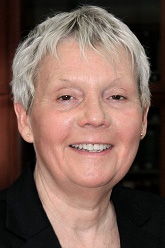

 It's getting so hard to find a decent .COM domain name that a big weed patch of businesses has grown up hawking really terrible names for enormous prices -- and they're finding buyers. They're catering to people who are just trying to find something -- anything! -- that will work for their new web site. The problem is especially acute for those who are trying to start a business. more
It's getting so hard to find a decent .COM domain name that a big weed patch of businesses has grown up hawking really terrible names for enormous prices -- and they're finding buyers. They're catering to people who are just trying to find something -- anything! -- that will work for their new web site. The problem is especially acute for those who are trying to start a business. more
 In January 2009 the US Congress began considering the American Recovery and Reinvestment Bill 2009 aimed at kick-starting an economy in deep recession. The package, passed into law on 17 February, comprised $787 billion of mainly tax cuts, unemployment benefits and spending in education, health care, infrastructure and energy. Included in the fiscal stimulus package was a relatively modest $7.2 billion for broadband and wireless in unserved and underserved areas... more
In January 2009 the US Congress began considering the American Recovery and Reinvestment Bill 2009 aimed at kick-starting an economy in deep recession. The package, passed into law on 17 February, comprised $787 billion of mainly tax cuts, unemployment benefits and spending in education, health care, infrastructure and energy. Included in the fiscal stimulus package was a relatively modest $7.2 billion for broadband and wireless in unserved and underserved areas... more
 ICANN has announced that three more domain name registrars have lost their accreditation due to non-compliance with the RAA. The three registrars have been informed that their agreements with ICANN will not be renewed. South American Domains (NameFrog), Simply Named and Tahoe Domains have been sent letters by ICANN outlining the decision and the reasons for it. So what now? more
ICANN has announced that three more domain name registrars have lost their accreditation due to non-compliance with the RAA. The three registrars have been informed that their agreements with ICANN will not be renewed. South American Domains (NameFrog), Simply Named and Tahoe Domains have been sent letters by ICANN outlining the decision and the reasons for it. So what now? more
 In a discussion about a recent denial of service attack against Twitter, someone asked, "Some class of suppliers must be making money off of the weaknesses. Anybody out there have a prescription for the cure?" Sure, but you're not going to like it. The Internet was originally a walled garden, where its operators knew who all the users were and could eject anyone who misbehaved... more
In a discussion about a recent denial of service attack against Twitter, someone asked, "Some class of suppliers must be making money off of the weaknesses. Anybody out there have a prescription for the cure?" Sure, but you're not going to like it. The Internet was originally a walled garden, where its operators knew who all the users were and could eject anyone who misbehaved... more
 When CAN-SPAM was passed in 2003, it was fairly clear that Congress wasn't trying to enable broad private enforcement. Everyone knew that rabid anti-spammers would seize any new statutory right for a litigation frenzy... Although I personally think Congress would better served all of us by omitting all private enforcement rights in CAN-SPAM, unquestionably the private rights in CAN-SPAM are drafted narrowly to prevent their abuses. That hasn't stopped some zealous anti-spammers from testing the limits of CAN-SPAM's private enforcement remedies anyway. more
When CAN-SPAM was passed in 2003, it was fairly clear that Congress wasn't trying to enable broad private enforcement. Everyone knew that rabid anti-spammers would seize any new statutory right for a litigation frenzy... Although I personally think Congress would better served all of us by omitting all private enforcement rights in CAN-SPAM, unquestionably the private rights in CAN-SPAM are drafted narrowly to prevent their abuses. That hasn't stopped some zealous anti-spammers from testing the limits of CAN-SPAM's private enforcement remedies anyway. more
 There are a lot of theories flying around about why Twitter and other social media services got knocked offline yesterday. I've heard rumors about it being linked to political tension between Georgia and Russia. Others blame Iran for the outages. I'm not a political commentator, therefore I cannot comment on anyone's political views -- but I have some logic and common sense, and I can draw some objective conclusions. more
There are a lot of theories flying around about why Twitter and other social media services got knocked offline yesterday. I've heard rumors about it being linked to political tension between Georgia and Russia. Others blame Iran for the outages. I'm not a political commentator, therefore I cannot comment on anyone's political views -- but I have some logic and common sense, and I can draw some objective conclusions. more
 The announcement that Google's chief executive Eric Schmidt is standing down from the Apple board hardly came as a surprise. Google's Android is already powering smartphones that offer an open alternative to Apple's iPhone, while the recent announcement of plans for Chrome OS, an operating system that will directly challenge Mac OS, makes Google a direct competitor to Apple in its core market... more
The announcement that Google's chief executive Eric Schmidt is standing down from the Apple board hardly came as a surprise. Google's Android is already powering smartphones that offer an open alternative to Apple's iPhone, while the recent announcement of plans for Chrome OS, an operating system that will directly challenge Mac OS, makes Google a direct competitor to Apple in its core market... more
 It may not be widely-known but the big 3 search engines -- Google, Yahoo! and Bing -- have established procedures for removing natural search results on the basis of the Digital Millennium Copyright Act (DMCA). That's good news for brand owners: if consumers can't find infringing websites via the search engines, they're less likely to come across them at all... more
It may not be widely-known but the big 3 search engines -- Google, Yahoo! and Bing -- have established procedures for removing natural search results on the basis of the Digital Millennium Copyright Act (DMCA). That's good news for brand owners: if consumers can't find infringing websites via the search engines, they're less likely to come across them at all... more
 In my previous article I showed that ICANN expects to recover a lot of money from the first round of applications for new generic Top-Level Domains (gTLDs) -- $92.5 million, to be exact -- and that even that dramatic figure is probably substantially underestimated. For that reason, I argued that ICANN probably will recoup a windfall from the first round of gTLD applications and pointed out that ICANN's promise to consult with the Internet community before spending such a windfall is unsatisfactory because it has failed to say beforehand what surplus revenues might be spent for. more
In my previous article I showed that ICANN expects to recover a lot of money from the first round of applications for new generic Top-Level Domains (gTLDs) -- $92.5 million, to be exact -- and that even that dramatic figure is probably substantially underestimated. For that reason, I argued that ICANN probably will recoup a windfall from the first round of gTLD applications and pointed out that ICANN's promise to consult with the Internet community before spending such a windfall is unsatisfactory because it has failed to say beforehand what surplus revenues might be spent for. more
 Australia, New Zealand and the USA have taken international leadership in relation to their approaches to the infrastructure investment their countries are committed to in relation to the multi-billion dollar investment in national broadband and smart grid infrastructure. This is based on open networks, which will allow multiple access to infrastructure that can be used for e-health, smart grids, tele-education, as well as, of course, to telecoms, Internet and entertainment services. more
Australia, New Zealand and the USA have taken international leadership in relation to their approaches to the infrastructure investment their countries are committed to in relation to the multi-billion dollar investment in national broadband and smart grid infrastructure. This is based on open networks, which will allow multiple access to infrastructure that can be used for e-health, smart grids, tele-education, as well as, of course, to telecoms, Internet and entertainment services. more
 This post was prompted by questions I was asked to address when I participated in a panel discussion of cybersecurity. Here are the relevant questions: "Should we reconsider the notion that companies under attack are prohibited from investigating the attackers and trying to locate them? We allow private investigators to conduct some activities that usually only the police are allowed to do; should we accredit private cyber investigators?" ...The one I found more interesting is the second question: whether we should accredit private cyber investigators. more
This post was prompted by questions I was asked to address when I participated in a panel discussion of cybersecurity. Here are the relevant questions: "Should we reconsider the notion that companies under attack are prohibited from investigating the attackers and trying to locate them? We allow private investigators to conduct some activities that usually only the police are allowed to do; should we accredit private cyber investigators?" ...The one I found more interesting is the second question: whether we should accredit private cyber investigators. more
 The FCC has posed a number of provocative questions to AT&T regarding the fact that iPhone subscribers cannot download and use the Google Voice application. AT&T should stifle every motivation to play cute or clever with the FCC. Apple adopted such a strategy when it suggested to the Library of Congress and others that it would be curtains for the free world if iPhone owners could hack, jailbreak, tether, and otherwise use their handsets without fear of violating the prohibition on circumventing copyright laws contained in the Digital Millennium Copyright Act. more
The FCC has posed a number of provocative questions to AT&T regarding the fact that iPhone subscribers cannot download and use the Google Voice application. AT&T should stifle every motivation to play cute or clever with the FCC. Apple adopted such a strategy when it suggested to the Library of Congress and others that it would be curtains for the free world if iPhone owners could hack, jailbreak, tether, and otherwise use their handsets without fear of violating the prohibition on circumventing copyright laws contained in the Digital Millennium Copyright Act. more
There is a Dutch website which regularly publishes comments on rulings of the World Intellectual Property Organization (WIPO) Arbitration, Dutch court cases, and similar things. They have a newsletter which reports over the latest cases. It is really meant for people who are into the legal aspects of domain names. In the July "nieuwsbrief" newsletter, there was a remark (in Dutch) about a case that the top level ".nl" suffix to the name should not be considered relevant. more
 First off all, still unknown to the masses, this newly proposed $185,000 USD generic Top-Level Domain (gTLD) scheme is in reality a suffix-less, custom-made, designer, globally exclusive domain name. Well done ICANN, as it is what the world needs now. However, ICANN has never mentioned this special marketing feature to date, as this suffix-less quality alone brings a major and a very positive revolution in cyber branding architecture for the net savvy marketers and dramatically changes the global thinking which has been primarily locked into a suffix based mentality when trying to reach for anything on the net; what name and what suffix? more
First off all, still unknown to the masses, this newly proposed $185,000 USD generic Top-Level Domain (gTLD) scheme is in reality a suffix-less, custom-made, designer, globally exclusive domain name. Well done ICANN, as it is what the world needs now. However, ICANN has never mentioned this special marketing feature to date, as this suffix-less quality alone brings a major and a very positive revolution in cyber branding architecture for the net savvy marketers and dramatically changes the global thinking which has been primarily locked into a suffix based mentality when trying to reach for anything on the net; what name and what suffix? more
 Having followed IP communications as an analyst since 2001, I've seen a few cycles come and go, and Smart Grid reminds me a lot of VoIP. Telcos and utilities both operate large, complex and costly networks, and prior to 1984, both were heavily regulated. Following the deregulation of telecom came a wave of unprecedented innovation and disruption built largely around IP technologies. We all know what that's done for telcos -- and communications in general. more
Having followed IP communications as an analyst since 2001, I've seen a few cycles come and go, and Smart Grid reminds me a lot of VoIP. Telcos and utilities both operate large, complex and costly networks, and prior to 1984, both were heavily regulated. Following the deregulation of telecom came a wave of unprecedented innovation and disruption built largely around IP technologies. We all know what that's done for telcos -- and communications in general. more
Sponsored byVerisign

Sponsored byDNIB.com

Sponsored byWhoisXML API

Sponsored byVerisign

Sponsored byRadix

Sponsored byIPv4.Global

Sponsored byCSC
